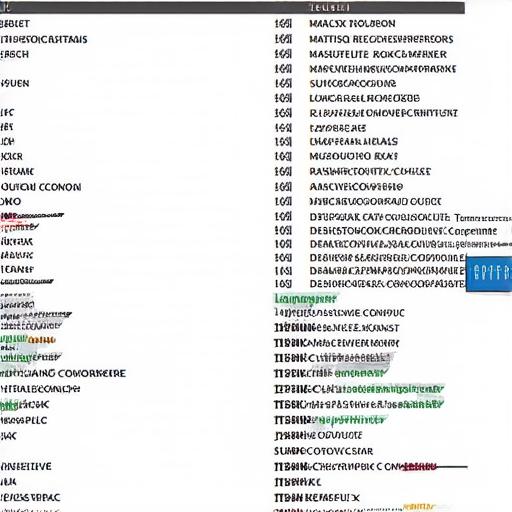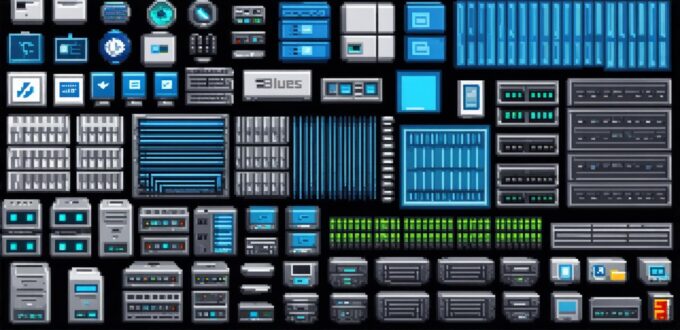Type 1: Mainframe Computers
Mainframe computers are large-scale, powerful machines designed to handle mission-critical workloads. They are used in industries such as banking, healthcare, and government, where data security is paramount. Key features of mainframe computers include high reliability, scalability, and fault tolerance. These systems can handle massive amounts of data and support a wide range of applications.
Mainframe computers have been around for decades and are known for their durability and reliability. They are designed to handle large-scale workloads without crashing or becoming unresponsive. Mainframes are used in industries where data security is critical, such as banking, healthcare, and government. These systems are highly secure, with advanced encryption and access controls to prevent unauthorized access to sensitive data.
Mainframes are also highly scalable, allowing organizations to easily add more processing power or storage capacity as needed. They can be configured in a variety of ways, depending on the specific needs of the organization. Mainframe systems can handle a wide range of applications, from simple file management to complex scientific simulations and financial modeling.
Type 2: Mid-Range Computers
Mid-range computers are smaller than mainframes but larger than desktop machines. They offer the power and performance of a mainframe without its high cost. These systems are ideal for businesses with moderate workloads, such as accounting, inventory management, and human resources.
Mid-range computers are designed to offer the power and flexibility of a mainframe at a lower cost. They are smaller than mainframes but larger than desktop machines, making them ideal for businesses that need more processing power than a desktop machine but don’t want to pay the high cost of a mainframe.
Mid-range computers offer improved processing speed, increased memory capacity, and enhanced networking capabilities compared to desktop machines. They can handle a wide range of applications and are highly scalable, allowing organizations to easily add more processing power or storage capacity as needed.
Type 3: Desktop Computers
Desktop computers are personal computers that sit on a desk or table. They are popular for their affordability, ease of use, and versatility. These systems can be used for various purposes, such as word processing, web browsing, gaming, and video editing.
Desktop computers are the most common type of computer in use today. They are affordable, easy to use, and offer a wide range of capabilities. Desktop computers come in many different sizes and configurations, ranging from small entry-level systems to high-performance workstations.
Desktop computers are highly customizable, allowing users to upgrade the system’s components, such as the processor, memory, or storage drive, to meet their specific needs. They also offer advanced graphics capabilities, making them ideal for gaming and video editing.
Type 4: Laptops
Laptops are portable computers that offer the convenience of a desktop computer in a compact package. They are designed for users who need to work on-the-go, such as students, freelancers, and business professionals.
Laptops are designed to be portable and lightweight, making them ideal for users who need to work on-the-go. They are smaller than desktop computers but offer many of the same features and capabilities. Laptops can handle a wide range of applications and are highly scalable, allowing organizations to easily add more processing power or storage capacity as needed.
Laptops also offer built-in networking capabilities, making it easy for users to connect to the internet and other devices.
Type 5: Mobile Phones
Mobile phones are handheld devices that offer the functionality of a desktop computer in a smaller package. They are designed for users who need to stay connected while on the go, such as busy professionals, students, and travelers.
Mobile phones are highly portable and offer advanced networking capabilities, making it easy for users to stay connected while on the go. They are also small and lightweight, making them ideal for users who need to work or communicate on-the-go.
Mobile phones come in many different sizes and configurations, ranging from basic flip phones to high-performance smartphones. Smartphones offer advanced capabilities such as internet access, email, social media, and mobile apps, making them highly versatile devices.
Type 6: Tablets
Tablets are portable computers that offer the convenience of a laptop in a compact package. They are designed for users who need to work on-the-go, such as students, freelancers, and business professionals.
Tablets are highly portable and offer many of the same features and capabilities as laptops, but with a smaller form factor. They can handle a wide range of applications and are highly scalable, allowing organizations to easily add more processing power or storage capacity as needed.
Tablets also offer built-in networking capabilities, making it easy for users to connect to the internet and other devices.
Type 7: All-In-One Computers

All-in-one computers are desktop computers that offer the convenience of a laptop in a compact package. They are designed for users who need to work on-the-go but prefer a larger form factor than a tablet.
All-in-one computers offer many of the same features and capabilities as laptops, but with a larger form factor. They can handle a wide range of applications and are highly scalable, allowing organizations to easily add more processing power or storage capacity as needed.
All-in-one computers offer advanced graphics capabilities, making them ideal for gaming and video editing. They also offer built-in networking capabilities, making it easy for users to connect to the internet and other devices.
Summary
Understanding the different types of computer systems is crucial for software developers to create efficient and effective software solutions. Whether you are developing a system for a small business or a large corporation, understanding the key features of each type of computer system can help you choose the right one for your needs. In this article, we have explored the top 10 types of computer systems and their key features, providing valuable insights for software developers to create systems that are efficient, reliable, and effective.
